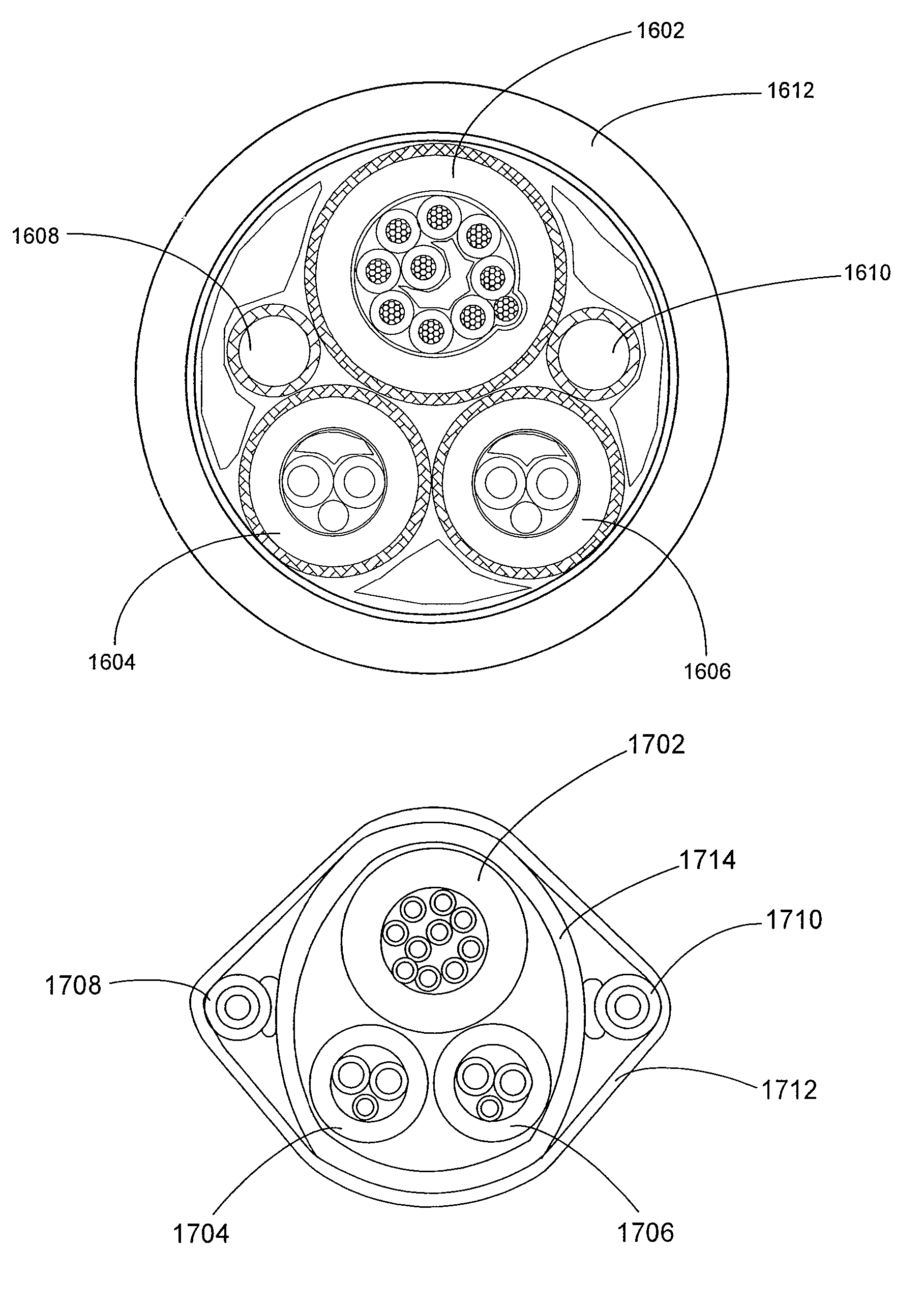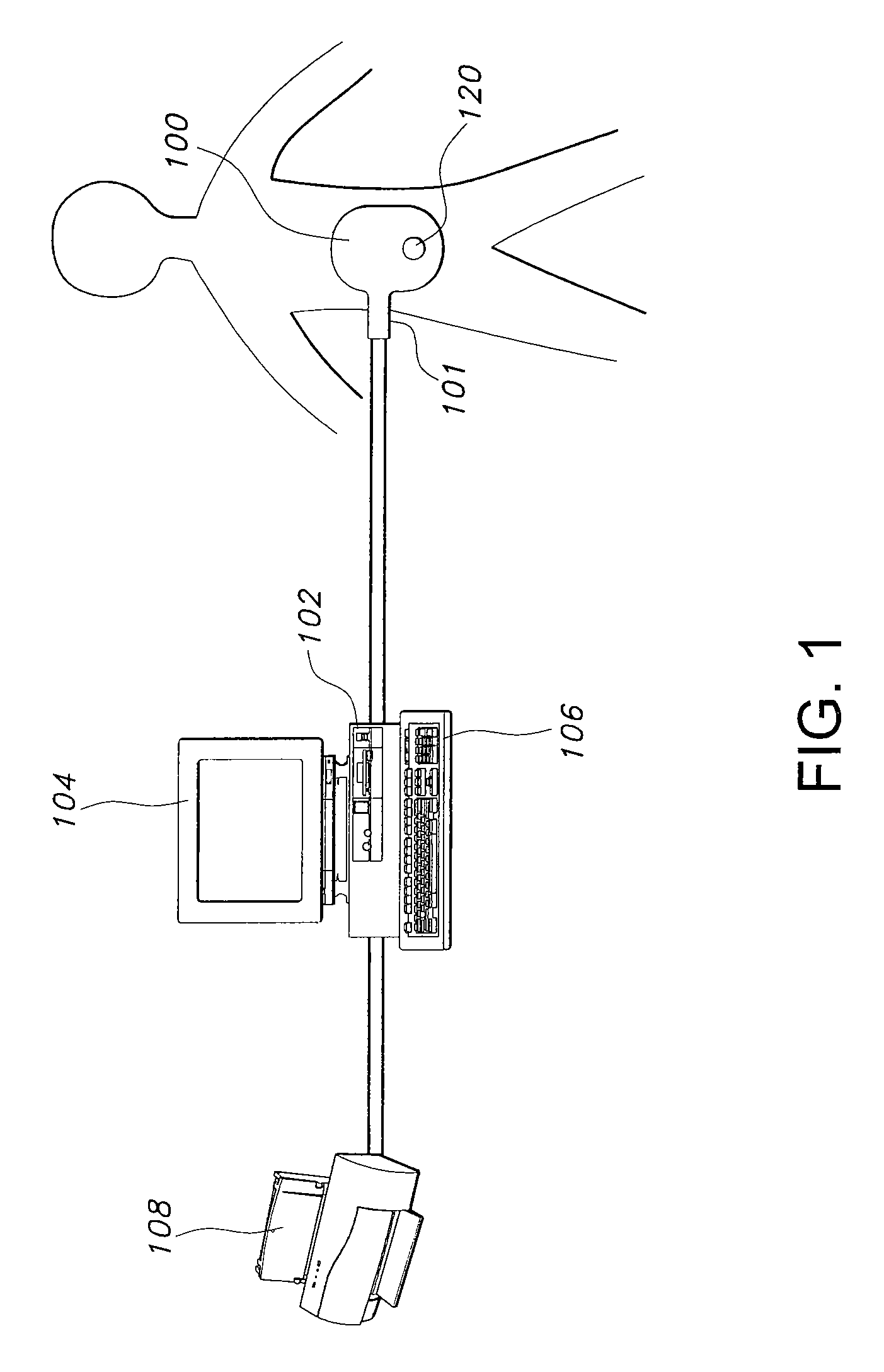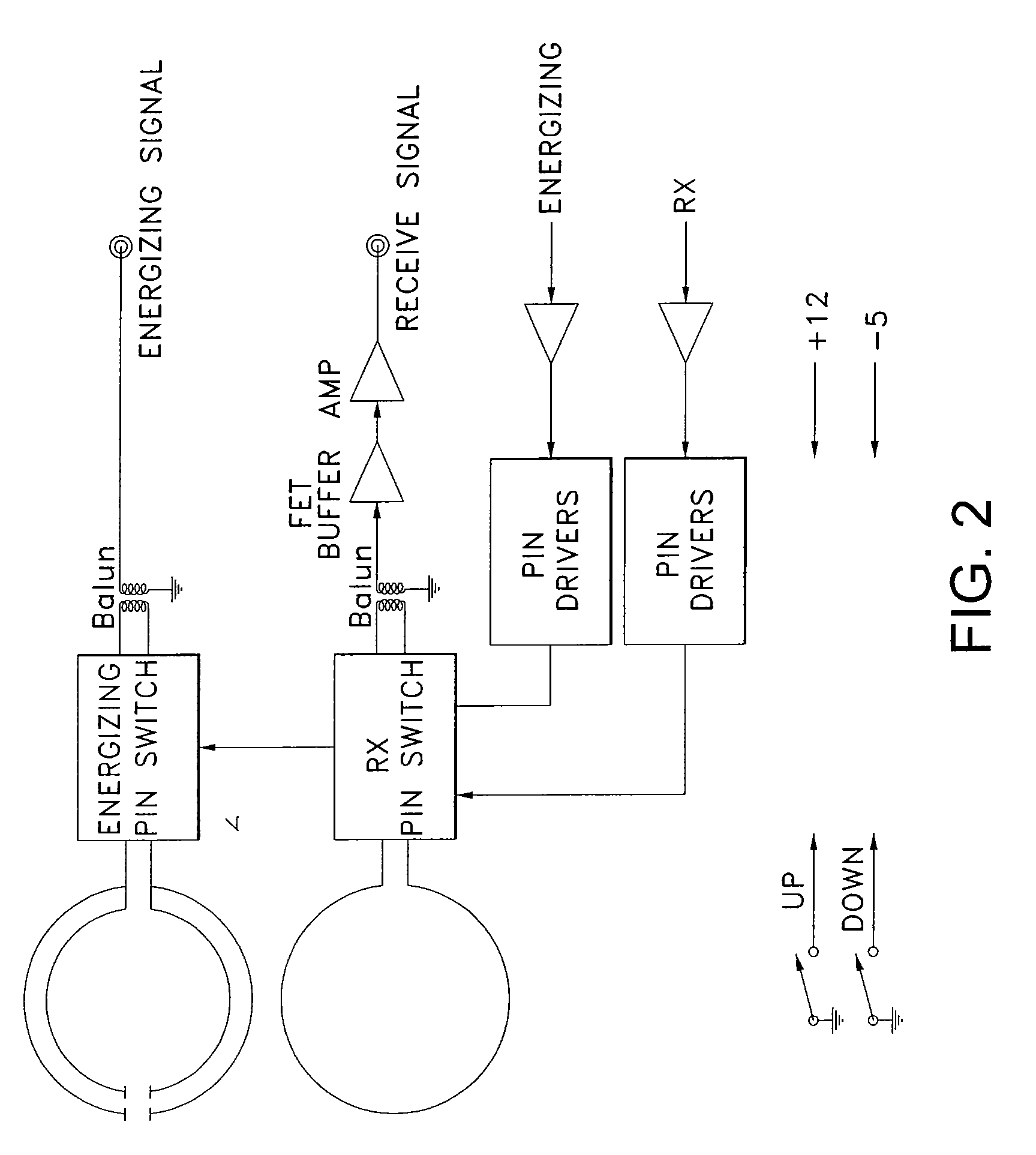Cable Assembly for a Coupling Loop
a technology of coupling loop and cable assembly, which is applied in the direction of insulated conductors, cables, angiography, etc., can solve the problems of increasing and the current imaging modalities of angiography and ct scan are not always sensitive enough to detect endoleaks or stent graft failure, so as to increase the chance of aneurysm rupture and prevent rupture
- Summary
- Abstract
- Description
- Claims
- Application Information
AI Technical Summary
Benefits of technology
Problems solved by technology
Method used
Image
Examples
Embodiment Construction
[0034] The present invention is directed towards a coupling loop and cable assembly that supports precise sampling of a low power, quickly dissipating signal (the sensor signal) and that isolates the energizing signal used to excite the sensor from the sensor signal. The present invention also provides orientation features for positioning the coupling loop relative to the sensor to maximize the coupling of the sensor signal. Briefly described, the coupling loop includes multiple loops. Preferably two stagger-tuned loops are used for transmitting the energizing signal to the sensor and an un-tuned loop is used for receiving the sensor signal from the sensor. The un-tuned loop is connected to a very high input impedance to minimize the impact of the inductance of the loop. A cable attached to the coupling loop provides maximum isolation between the energizing signal and the sensor signal by maximizing the distance between the coaxial cables that carry the signals and maintaining the r...
PUM
 Login to View More
Login to View More Abstract
Description
Claims
Application Information
 Login to View More
Login to View More - R&D
- Intellectual Property
- Life Sciences
- Materials
- Tech Scout
- Unparalleled Data Quality
- Higher Quality Content
- 60% Fewer Hallucinations
Browse by: Latest US Patents, China's latest patents, Technical Efficacy Thesaurus, Application Domain, Technology Topic, Popular Technical Reports.
© 2025 PatSnap. All rights reserved.Legal|Privacy policy|Modern Slavery Act Transparency Statement|Sitemap|About US| Contact US: help@patsnap.com



